Lanier Center for Archaeology celebrates five-year anniversary
Esteemed program enters its next five years with expanded resources and new projects on the horizon.
By Janel Shoun-Smith | 615-966-7078 |
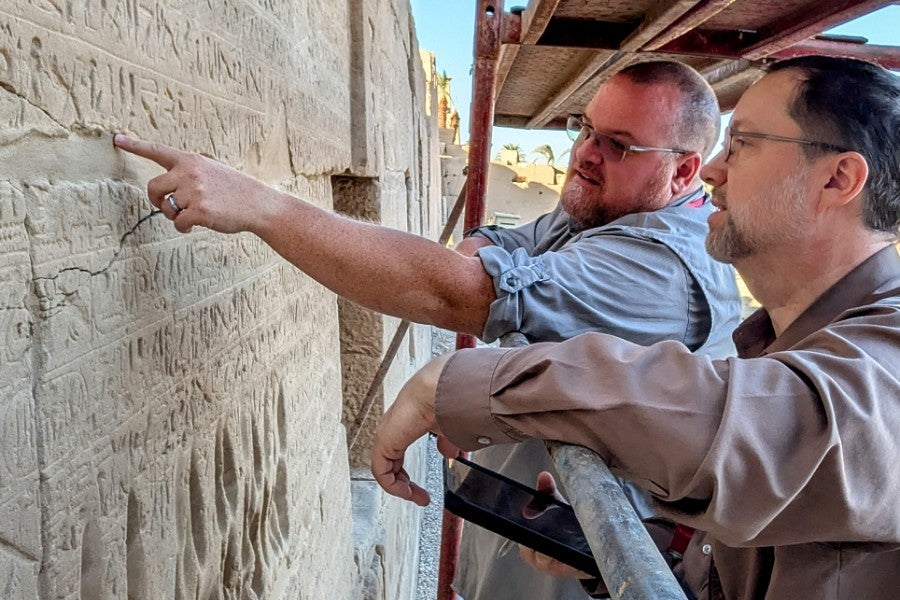
Mark Janzen, department chair, and L.S. Baker Jr., research associate and lead epigrapher, discuss details of the Hittite Treaty inscribed on the Karnak Temple walls.
It has been five years since two of the world’s foremost experts in their respective areas of archaeology, Steve Ortiz and Tom Davis, came to Lipscomb to head up the Lanier Center for Archaeology.
Offering Lipscomb’s first Ph.D. degree, the Lanier Center for Archaeology (LCA) has brought the world of the ancient Near East into Lipscomb’s present, with active projects in Israel, Egypt and Jordan as well as research projects in Cyprus, Sudan and Kazakhstan focusing on the development of Christianity in the region.
Since the launch of the center, one of the few archaeological programs in North America to focus on Biblical archaeology, it has graduated three Ph.D.s and 13 master’s candidates.
Today in 2025, the LCA consists of a major research institute with nine research projects underway either in the field or in the research and publication phase, as well as a vibrant academic program training the next generation of scholars with 37 students enrolled in its graduate programs.
The LCA leaders are looking forward to new challenges on the horizon such as initiating new excavation projects, coordinating an international conference with partner universities and collaborating with external institutes and Lipscomb programs to move its research forward.
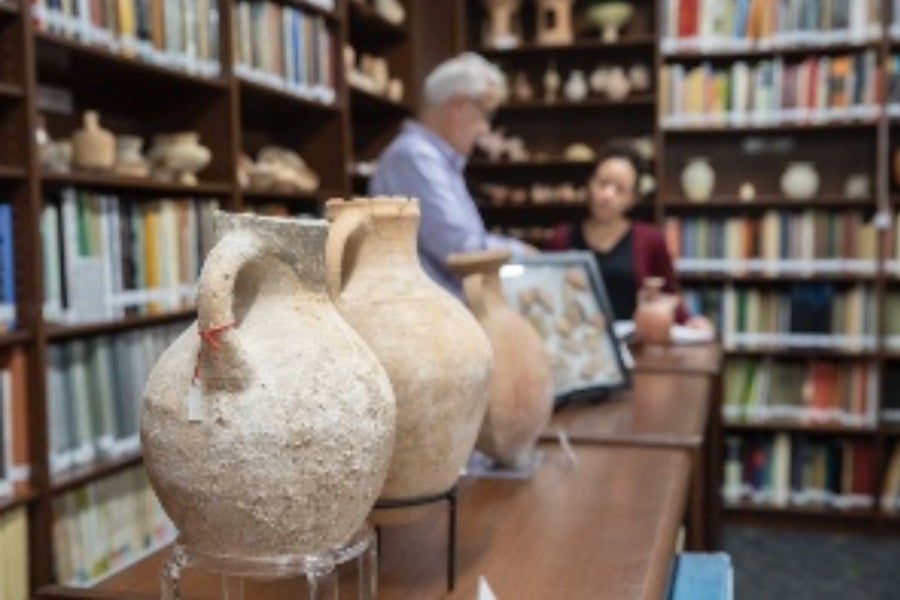
Center director Dr. Steve Ortiz provides hands-on instruction to doctoral students both with the artifact collection on-campus and at the on-site dig opportunities.
Texas to Nashville
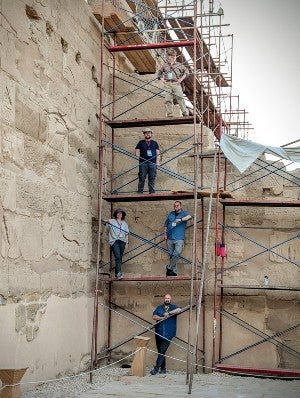
The Lanier epigraph team.
The LCA operated as the Tandy Museum and Institute at Southwestern Baptist Theological Seminary in Fort Worth for 14 years before relocating to Lipscomb.
Ortiz, now director of LCA, was originally hired to develop the Tandy research center and academic program. Davis, recently retired assistant director, joined the Tandy Institute shortly after Ortiz to expand its research and inaugurate its Ph.D. program.
At Southwestern, the Tandy Institute administered four of its own excavation sites, a luxury many other programs did not have. Students were able to participate in excavations in Israel at Tel Gezer and in Cyprus at the Kourion site. Students were also able to participate in the Karnak epigraphic survey in Luxor, Egypt and the Ilibalyk Expedition in Kazakhstan.
After 14 years, the Tandy Institute grew to four faculty members, 20 doctoral and seven master’s level students enrolled. However, despite that growth, the Tandy Institute found itself facing closure due to administrative changes and financial constraints at its host seminary.
At that point, a friend of the program stepped in with a solution. Mark Lanier, a member of the Lipscomb Board of Trustees and a 1981 Lipscomb graduate, and his wife Becky, are long-time supporters of the program and founders of the Lanier Theological Library in Houston. They made it possible for the program to move to Lipscomb in 2020 and become the Lanier Center of Archaeology.
The center began offering a Doctor of Philosophy in archaeology of the Ancient Near East and a Master of Arts in archaeology and Biblical Studies in January 2021. All 20 doctoral students and seven master’s level students moved from their old program in Texas and became Bisons.
The Lanier Center arrived at Lipscomb boasting an archaeological research library, an extensive artifact study collection and a ceramic restoration lab. Its collections hold about 1,400 artifacts now and an increased collection of sherds (a fragment of a pottery vessel found at archaeological sites), numbering in the thousands.
The scholarly work of the LCA’s original leaders, Ortiz and Davis, has not only been published widely throughout the field, but they were also on the team of scholars who worked on the ESV Archaeology Study Bible.
Ortiz has worked in Israel for more than 40 years. He has been a senior staff member at several sites in Israel (Jerusalem, the southern coast, Judean Foothills and the Samaria region). His research and publications focus on the archaeology of David and Solomon, Iron Age I and II transition, and the border relations between Judah and Philistia.
Davis has 45 years of experience as an archaeologist, working extensively in Cyprus, the Near East, Egypt, Central Asia, and the United States. He has previously served as the director of the Cyprus American Archaeological Research Institute in Nicosia, Cyprus, one of the premier archaeological research centers in the Eastern Mediterranean.
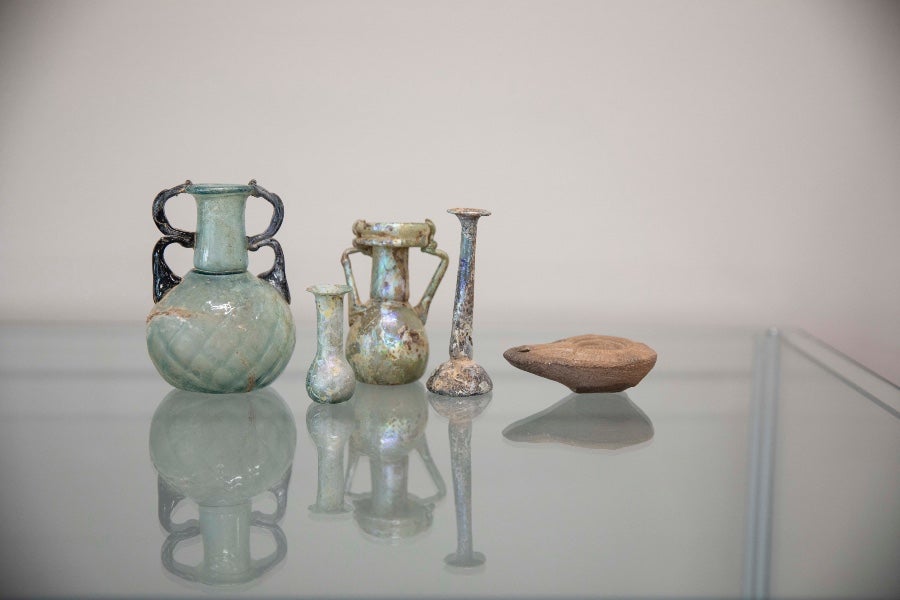
ARTIFACTS SUCH AS THESE SPUR AND INFORM STUDENT PRIMARY RESEARCH PROJECTS, SUCH AS ONE PROJECT EXPLORING THE USE OF GLASS IN THE ANCIENT WORLD.
Five years at Lipscomb
The newly established LCA hit the ground running with two new projects quickly added. Davis was invited to join the excavation at the Nuri Archaeological Expedition in Sudan and also with the Abila Archaeological Project on the Jordan/Syrian border, which allows the LCA to continue offering experiences in the time of the early Church, said Davis.
One of the immediate issues was to hire a third faculty member to oversee dissertations and research, especially as the center saw a growth in student inquiries into the new program at Lipscomb, said Ortiz. The LCA’s former colleague and research associate Mark Janzen was hired in 2022 as associate professor of archaeology and ancient history.
Each year, the Lanier students present at a number of respected academic conferences such as the Biblical Archaeology Society’s BAR Fest, the Society of Biblical Literature, the American Academy of Religion and the American Schools of Overseas Research.
In addition, the program cements its role as an academic leader in the field by holding its own two conferences annually, intended to provide Lipscomb students access to the top scholars in the field and opportunities to present their work.
These conferences also engage broader academic disciplines and inform non-specialists, said Ortiz. “Our excellent scholarship has been a draw to Lipscomb,” he said. “Our conferences provide a new and unique aspect to Christian education for regional campuses.”
Topics have included: “The Western Boundaries of Ancient Judah,” “Conflict and Coexistence: Jews, Christians, and Muslims in Late Antiquity” and “Delta to the Desert: Egyptian Interests in the Sinai and the Levant.”
In 2024, the center held a third international conference, “Pitfalls and Paradigm Shifts: The Fall and Rise of Biblical Archaeology,” in partnership with the Lanier Theological Library, with scholars from Europe, the Middle East and throughout the United States attending.
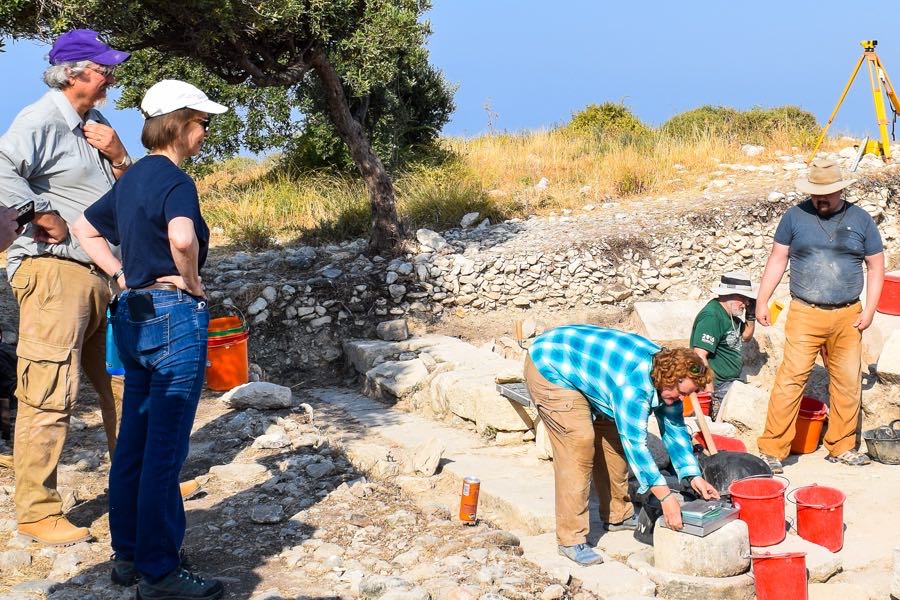
U.S Ambassador to Cyprus Judith Garber visited Lipscomb's Kourion excavation.
Looking ahead
The LCA is jumping into the coming years with expanded resources and new leadership.
With Davis’ retirement this past summer, he is donating his personal library of 2,000 volumes on New Testament and early Church archaeology to the center.
Other donations of resources include:
- The latest of multiple book donations from the Lanier Theological Library;
- 637 volumes about the archaeology and history of the ancient Near East from Beth Alpert Nakhai of the University of Arizona;
- The library of Rob McRay with volumes relating to the history and geography of the ancient Near East; and
- The pottery and slide collection of Father Thomas Clark Moore, including 57 ceramic objects, from the Arizona Center for Judaic Studies at the University of Arizona.
Davis, though retired, will continue to be a major force in the research of the LCA as he oversees the publication of research from finds in Kourion and Nuri, supervises his former Ph.D. students and will continue as a field research associate of Tel Abila.
Chris McKinny, with extensive experience in Israel within the fields of historical geography, biblical studies and archaeology, has been hired as associate professor to fill the open faculty position.
“Dr. McKinny’s research will overlap with the work of Dr. Davis, while also moving the research focus from the early church in the eastern Mediterranean to the Hellenistic and Roman Periods in Galilee, which will closely align with New Testament Studies,” said Ortiz. “There is a lot of change coming in the next five years.”
Janzen has taken over as a department chair. “Most of the LCA’s projects are moving out of the field and into a research phase,” said Janzen. “We plan to start two new research projects, one on the southern coast of Israel and a second site moving into a new region of research for the LCA—a New Testament site in Galilee.”
The 2025-2026 academic year will see LCA’s largest growth in student numbers with 12 MA students and 25 Ph.D. students enrolled for the fall semester, said Ortiz.
The LCA is also collaborating with Lipscomb’s Hazelip School of Theology to develop an undergraduate degree in the Bible and archaeology, as well as a D.Min. degree for those who want to use biblical archaeology for teaching and ministry in schools and churches, said Janzen.
In addition to all that, each year Lipscomb professors, students and associates travel overseas to conduct new excavations and unearth new discoveries. Read on to see some of the most notable finds over the past five years.
Milestone Discoveries at Excavations
Kourion, Cyprus
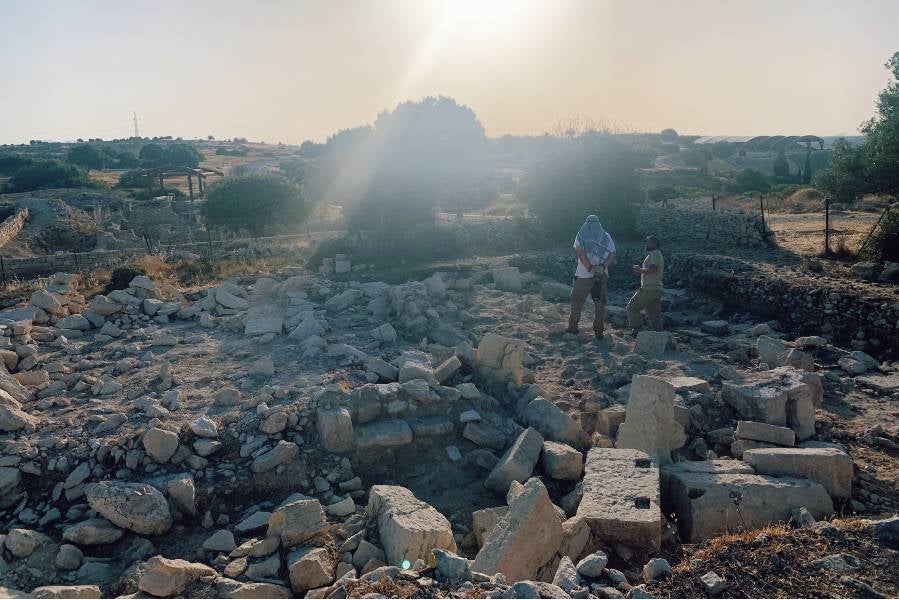
In May 2022, the Lanier Center launched its first excavation since the COVID-19 pandemic halted international travel to Kourion in Cyprus, where the center’s archeologists had worked since 2012. Eleven students contributed to a 20-person team.
On that project, the Lipscomb team made the significant and unusual discovery of an almost-intact sculpture of a young boy.
“An almost complete sculpture is extremely rare in an archaeological excavation of a domestic setting,” said Davis at the time. “I have never found one in 40 years of excavation. It is marvelous for our students to have this experience.”
This sculpture is similar to one that is currently in the Vatican Museum, which is thought to be a Roman variation of a 2nd-century BCE original. This variation was popular during the 2nd century CE, and its presence, along with similarly dated pottery found resting on the floor, suggests that the building the Lipscomb team excavated was in use during this time.
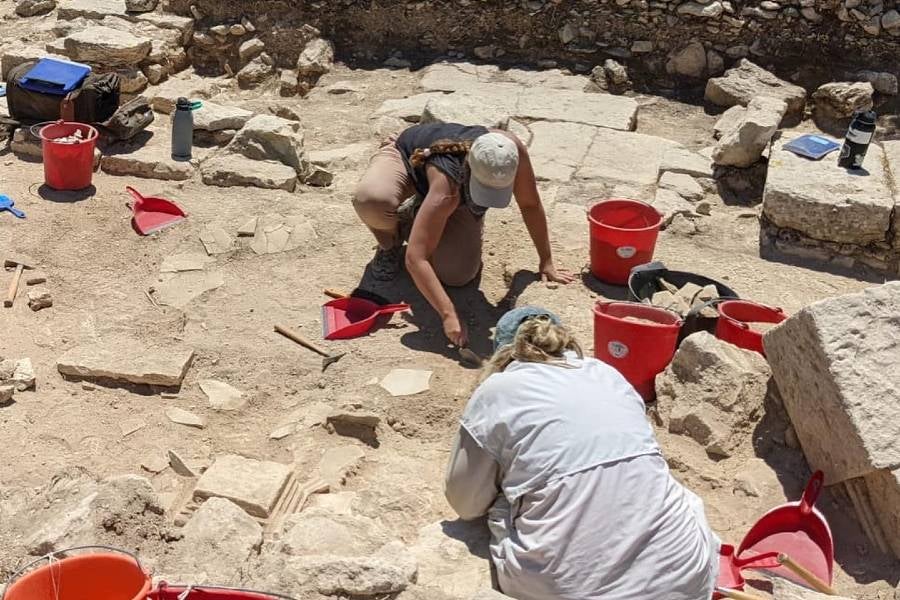
Tel Gezer, Israel
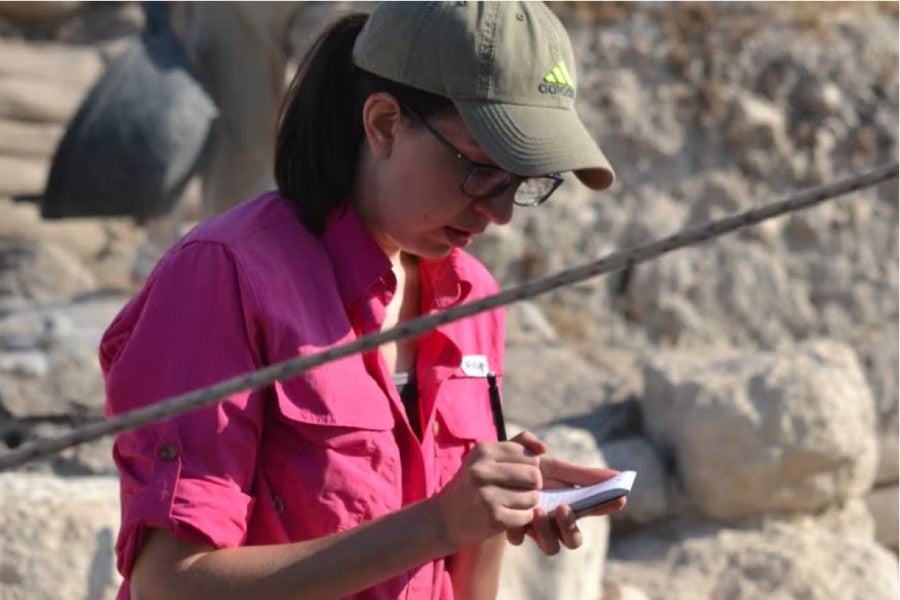
Charissa Wilson, a May 2025 graduate, is the third person — and the first woman — to earn a Doctor of Philosophy degree in Archaeology of the Ancient Near East from Lipscomb.
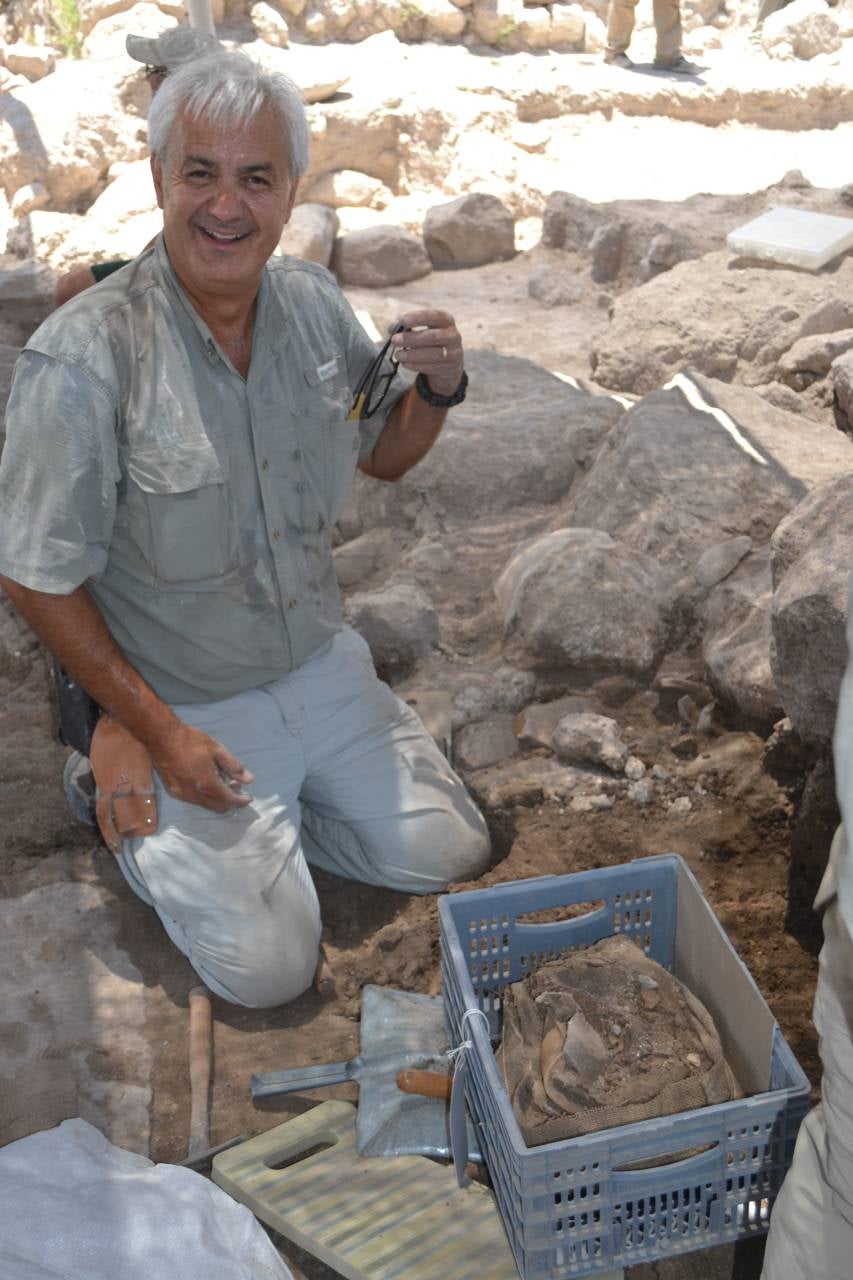
Steve Ortiz
In the summer of 2023, findings from multilayered radiocarbon dating, known as C-14 dating, were published in the PLOS ONE academic journal and scored mentions by Haaretz, Phys.Org, Science Daily, Newsweek, Armstrong Institute of Biblical Archaeology and others, as well as The Jerusalem Post.
A team from the LCA’s predecessor, the Tandy Institute, collected the samples for the radiocarbon dating during the ten seasons of excavations at Tel Gezer from 2006 to 2017.
Lyndelle Webster, the lead scholar on the radiocarbon dating project at Gezer, used precision dating of collected charred seeds that have a short growing period, to find that the site’s historical timeline corresponds to events described in written sources including the Bible.
This precision dating and findings over 10 years of excavating Tel Gezer indicate that in the time of Solomon, Gezer boasted a monumental gate and administrative complex that was meant to convey power and authority over newly acquired territories in the area, Ortiz argued in the Biblical Archaeology Review (BAR).
Ortiz and his co-authors argue that these structures are a correlation to the biblical passage 1 Kings 9:15–16, which notes that among his many claims to fame, King Solomon fortified the royal cities of Hazor, Megiddo and Gezer.
These results allow researchers, for the first time, to independently determine the site’s chronology, test proposed historical correlations and contribute to debates on Israelite, Philistine and Iron Age chronology.
Tel Burna, Israel
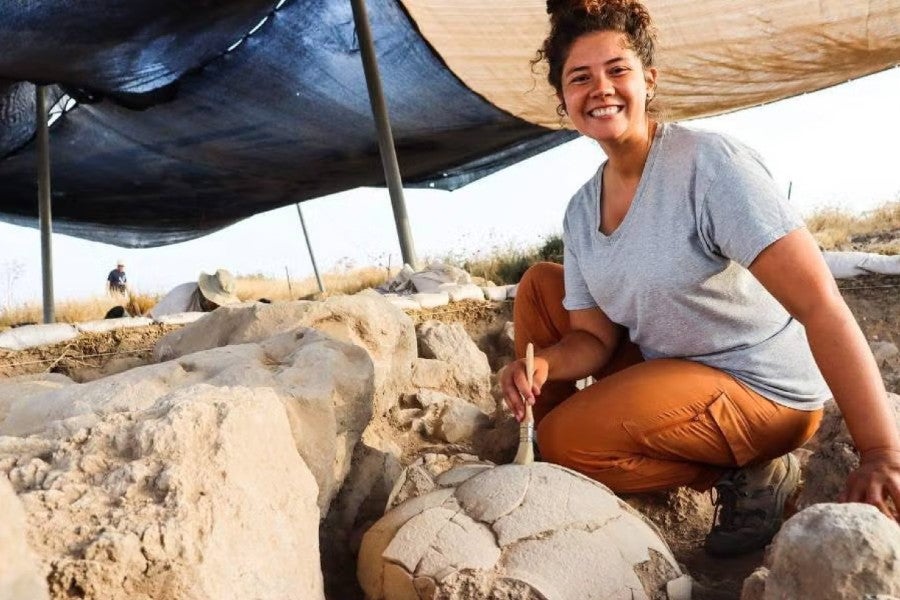
2023 master's graduate Evie Wilson brushes off a large storage jar during excavation work at the Tel Burna project in Israel.
In 2019, Marcella Barbosa Rigsby, LCA collections manager, education coordinator and Ph.D. candidate, began supervising her own dig area at Tel Burna with the goal to find the southern wall of a 13th century BC Canaanite cultic enclosure (or religious building) previously found at the site.
However the team found something else entirely (not uncommon in archaeology): another monumental building that was right next door to the aforementioned cultic enclosure. Barbosa Rigsby is working to analyze and identify the function of this building, which itself is a rare find, said Barbosa Rigsby.
Lipscomb’s summer 2024 team collaborated with other teams at the site intending to finish excavating the full footprint of this new building but they found that the building was much larger than originally thought. It comprised 13 rooms which is quite large for such a building, said Barbosa Rigsby, who presented her findings and theories about the cultic enclosure and this new monumental building over the past year at various conferences.
“It is definitely bigger than all regular domestic buildings (private homes) around it,” she said. “It does not look like a temple so it doesn’t look like religious practices were its sole function. It looks like it might be an administration building for a Canaanite cultic sect or the governance of the town.”
This site, offering a glimpse into religious practices over 3,000 years ago, was listed in Christianity Today’s top 10 biblical discoveries in 2024.
Karnak, Egypt
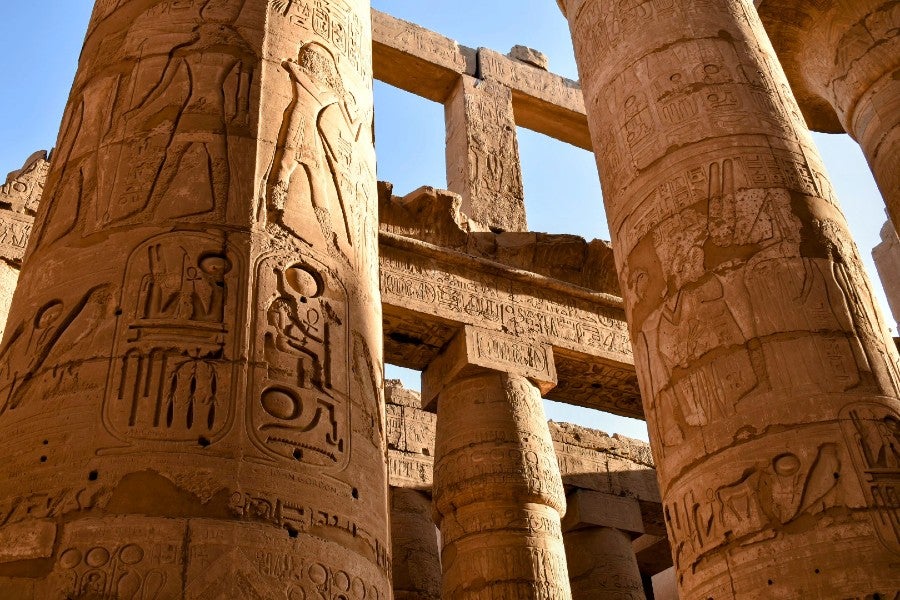
The inscribed columns in the Great Hypostyle Hall in the Karnak Temple.
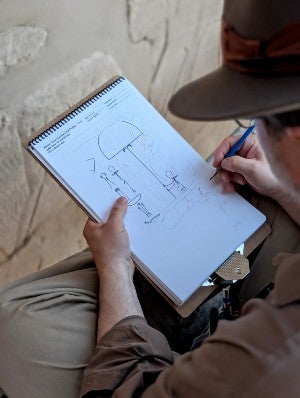
The epigrapher’s corrections and notes can be seen here in pencil sketches and meticulous descriptions.
This past May, a five-person team, led by Janzen carried out the three-week Karnak Great Hypostyle Hall Epigraphic Project.
The project involves detailed review and recording of the preserved scenes and inscriptions on the exterior walls of the Cour de la Cachette at Karnak Temple, which commemorate the military victories of Merneptah, the fourth pharaoh of the Nineteenth Dynasty of Ancient Egypt.
Additionally, the wall includes the famous Hittite Treaty from the reign of Ramesses II, the most complete copy of the oldest peace treaty between large empires in history. Within the last couple years, the Lanier was given permission to include the treaty in their work.
The Lipscomb team refined the details of the drawings and collated that season’s corrections into a master drawing.
In addition, Terrence J. Nichols, LCA Ph.D. candidate and epigrapher, explored using a laser scanner to create a record of the wall. This preliminary effort is aimed at eventually producing a 3-D model of the treaty back on the Lipscomb campus.
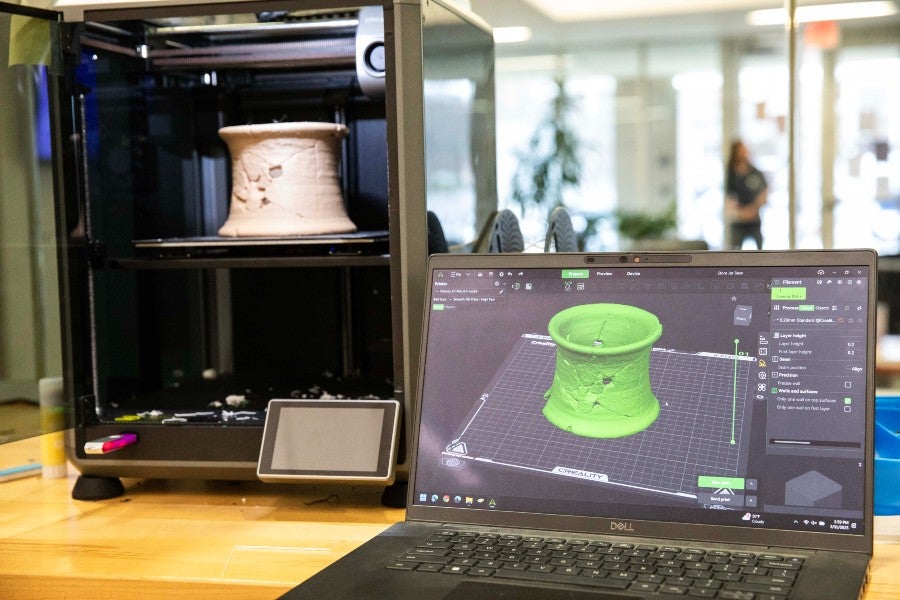
A 3-D printer manufactures a replica of an artifact along with the 3-D computer image the printer worked from to create this jar holder. in Lanier's artifact collection.
Nuri, Sudan
In January 2023, the center sent a team to the Nuri site, a royal cemetery and acropolis with several pyramids. Three Lipscomb Ph.D. students joined Davis, to clear a sufficient amount of the temple to determine if any ancient reliefs or inscriptions were intact, and, if so, to record them.
“Nuri gave us a chance to excavate on a pyramid site, which is an extremely rare opportunity today,” said Davis. “We found what I believe to be a cemetery chapel with three Christian burials, maybe one of the earliest Christian buildings in Sudan.”